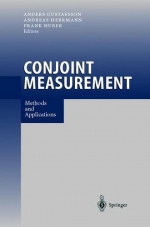Tab Article
"Conjoint measurement is one of the most significant and most widely recognized methods in science as well as in practice for analyzing marketing problems. It is the foremost device for measuring value-to-customer today." (H. Simon, CEO and Chairman Simon, Kucher & Partners) Top researchers present in this book the latest developments in the field of conjoint analysis and provide an overview that can be used in class and as a guide for market research activities. "In this book you will find all of the modern aspects of conjoint analysis, measurement as well as simulation of market share." (Prof. S. Albers) "This new book is a welcome addition to the conjoint literature. It is a fitting testimonial to the sustained interest in conjoint methods and the vigor or researchers." (Prof. P. E. Green)


